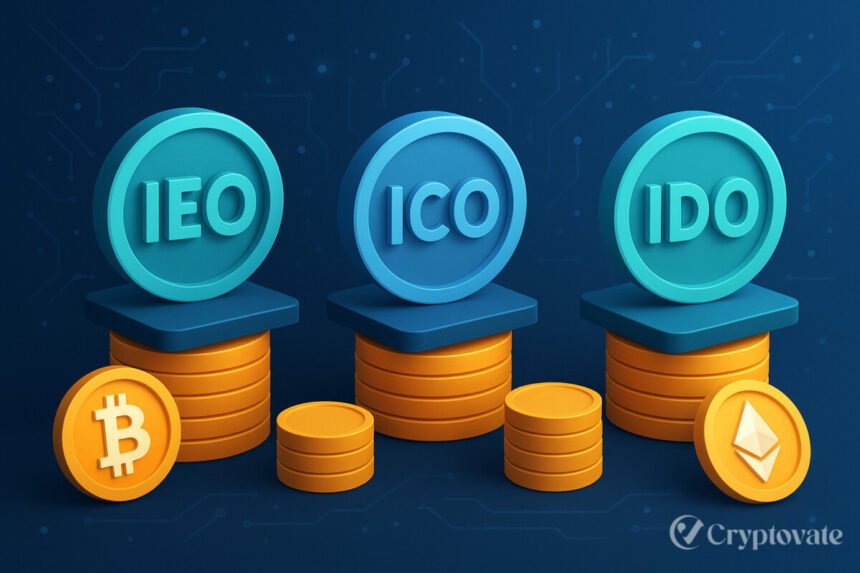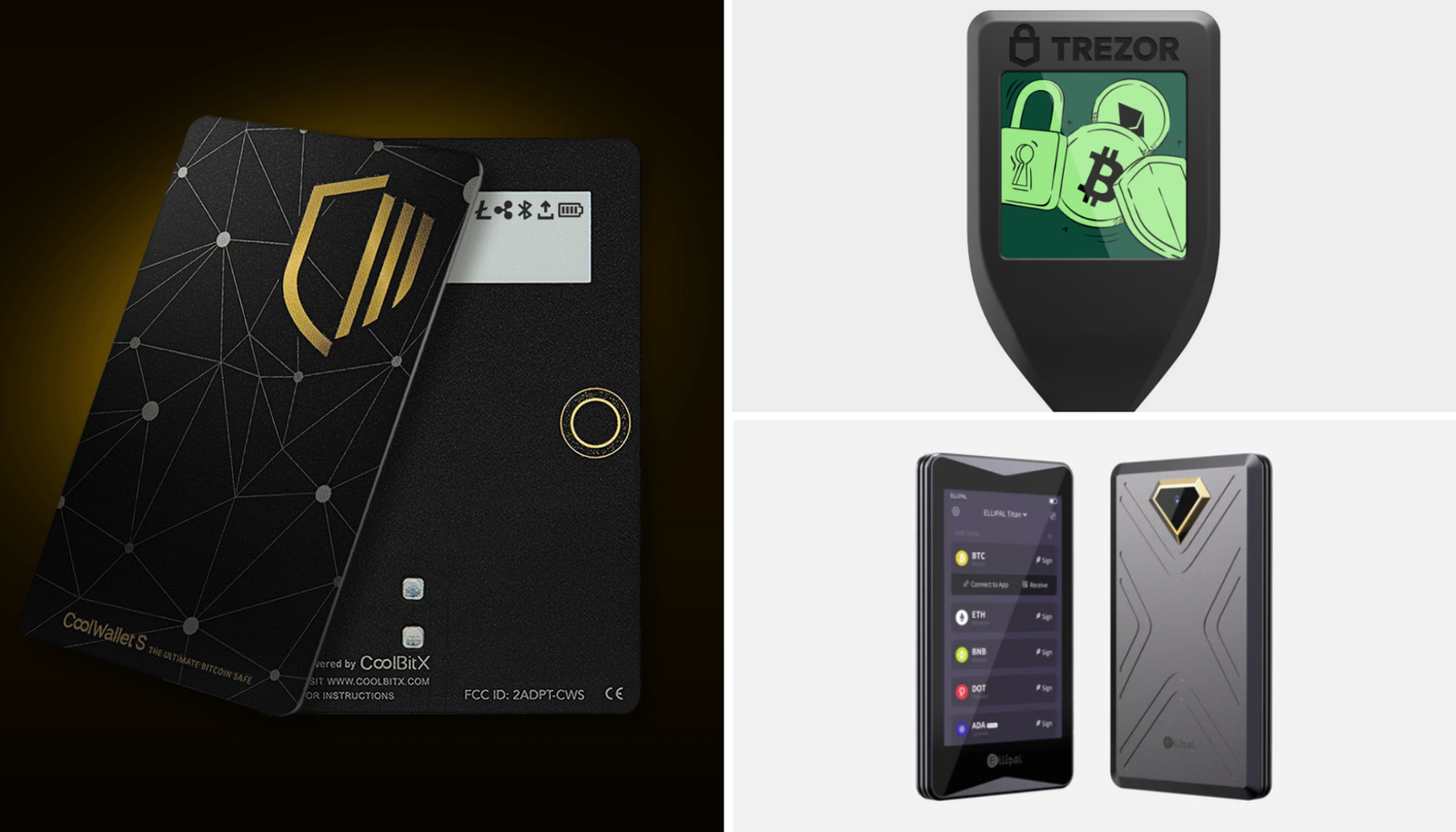– Ad –
| Getting your Trinity Audio player ready... |
The cryptocurrency industry has revolutionized fundraising, offering innovative ways for projects to raise capital. Among the leading fundraising methods are Initial Coin Offerings (ICOs), Initial Exchange Offerings (IEOs), and Initial DEX Offerings (IDOs). Each approach has unique features, benefits, and challenges, making it crucial to understand which one aligns with your project’s goals or investment strategy. This article compares IEOs, ICOs, and IDOs, helping startups and investors make informed decisions.
What Is an ICO?
An Initial Coin Offering (ICO) is a fundraising method where a project issues its own cryptocurrency or token to investors in exchange for funds, typically in Bitcoin (BTC) or Ethereum (ETH). ICOs gained popularity during the 2017 crypto boom, with projects like Ethereum and EOS raising millions. However, they operate without centralized oversight, relying on the project team to deliver on promises outlined in a whitepaper.
Key Features of ICOs
- Decentralized: No central authority or exchange is involved; tokens are sold directly by the project.
- High Accessibility: Anyone with a crypto wallet can participate, often without KYC (Know Your Customer) requirements.
- High Risk: Lack of regulation led to numerous scams, with some projects disappearing after raising funds.
ICOs are ideal for projects seeking maximum flexibility and global reach but come with significant risks for investors due to limited vetting.
What Is an IEO?
An Initial Exchange Offering (IEO) is a fundraising event conducted through a centralized crypto exchange, such as Binance or KuCoin. The exchange acts as a trusted intermediary, vetting projects, managing token sales, and ensuring compliance with regulations. For a detailed understanding of IEOs, check out our Initial Exchange Offering (IEO) Beginner’s Guide.
Key Features of IEOs
- Exchange Vetting: Exchanges conduct due diligence, reducing the risk of scams.
- Immediate Liquidity: Tokens are listed on the exchange post-IEO, enabling instant trading.
- KYC/AML Requirements: Investors must complete identity verification, ensuring compliance but limiting accessibility.
IEOs are suitable for projects seeking credibility and investors prioritizing security over decentralization.
What Is an IDO?
An Initial DEX Offering (IDO) is a fundraising approach carried out on decentralized exchanges (DEXs), such as Uniswap or PancakeSwap. IDOs leverage decentralized platforms, allowing projects to raise funds through liquidity pools or token swaps without a centralized intermediary.
Key Features of IDOs
- Decentralized: Operates on blockchain protocols, offering transparency and autonomy.
- Community-Driven: Often involves token airdrops or community incentives to boost participation.
- Lower Costs: No exchange fees, but projects must manage their own marketing and security.
IDOs appeal to projects and investors who value decentralization but require technical expertise to navigate.
IEO vs. ICO vs. IDO: A Detailed Comparison
To help you choose the right fundraising method, here’s a comparison of ICOs, IEOs, and IDOs based on key factors:
| Criteria | ICO | IEO | IDO |
| Platform | Project’s website or platform | Centralized exchange (e.g., Binance) | Decentralized exchange (e.g., Uniswap) |
| Vetting Process | None; relies on project team | Exchange conducts due diligence | Minimal; community-driven |
| Accessibility | Open to anyone with a wallet | Requires KYC/AML compliance | Open, but requires DEX familiarity |
| Cost | Low (marketing costs) | High (exchange fees) | Low (gas fees, no intermediary) |
| Liquidity | Delayed; depends on exchange listing | Immediate; tokens listed on exchange | Immediate via DEX liquidity pools |
| Security | High risk of scams | Lower risk due to exchange vetting | Moderate; depends on smart contracts |
| Regulatory Compliance | Minimal; high regulatory risk | High; exchange ensures compliance | Moderate; varies by jurisdiction |
| Investor Trust | Low; depends on project reputation | High; backed by exchange | Moderate; relies on community trust |
This table highlights the trade-offs between accessibility, security, and costs, helping you align your choice with your project’s needs or investment goals.
Which Fundraising Method Is Right for You?
Selecting between ICO, IEO, and IDO hinges on your project’s objectives, resources, and intended audience. Here’s a breakdown for startups and investors:
For Startups
- Choose ICO if: You want maximum flexibility, have a strong marketing team, and can build trust without third-party backing. Ideal for early-stage projects with limited budgets but high risk tolerance.
- Choose IEO if: You prioritize credibility and want access to an exchange’s user base. Best for projects with sufficient funds to cover exchange fees and a need for immediate liquidity.
- Choose IDO if: You value decentralization and have the technical expertise to manage smart contracts and liquidity pools. Suited for community-driven projects with a focus on transparency.
For Investors
- Choose ICO if: You’re comfortable with high risk for potentially high returns and have the expertise to vet projects independently.
- Choose IEO if: You prioritize security and trust in established exchanges, even if it means limited access due to KYC requirements.
- Choose IDO if: You prefer decentralized platforms and are familiar with DEXs, but be prepared to assess smart contract security.
Pros and Cons of Each Method
ICO Pros and Cons
- Pros: High accessibility, low costs, global reach.
- Cons: High risk of scams, regulatory uncertainty, delayed liquidity.
IEO Pros and Cons
- Pros: Enhanced security, immediate liquidity, exchange credibility.
- Cons: High fees, limited accessibility due to KYC, centralized control.
IDO Pros and Cons
- Pros: Decentralized, low costs, community engagement.
- Cons: Technical complexity, smart contract risks, limited vetting.
Key Considerations for Success
- Project Vetting: For ICOs and IDOs, startups must build trust through transparent whitepapers and community engagement. IEOs rely on exchange vetting, but projects still need a strong pitch.
- Regulatory Compliance: IEOs offer the most regulatory safety, while ICOs face the highest risk. IDOs vary by jurisdiction, so consult legal experts.
- Marketing: ICOs and IDOs require robust marketing to attract investors, while IEOs benefit from the exchange’s user base.
- Technical Expertise: IDOs demand blockchain knowledge, while ICOs and IEOs are more accessible to non-technical teams.
Conclusion
Choosing the right crypto fundraising method—ICO, IEO, or IDO—depends on your project’s goals, budget, and risk tolerance. ICOs offer flexibility but carry high risks, IEOs provide security and liquidity at a cost, and IDOs prioritize decentralization with technical demands. By understanding these differences, startups can select the best approach to raise capital, and investors can make informed decisions.
Also Read: Introduction to Initial Exchange Offering (IEO): A Beginner’s Guide
FAQs
What is the main difference between ICO, IEO, and IDO?
ICOs are direct token sales by projects, IEOs are exchange-hosted with vetting, and IDOs are decentralized sales on DEXs, emphasizing autonomy.
Which fundraising method is safest for investors?
IEOs are generally safest due to exchange vetting and regulatory compliance, reducing the risk of scams compared to ICOs and IDOs.
Can anyone participate in an IEO?
No, IEOs require KYC/AML verification, limiting participation to users who meet the exchange’s compliance standards.
Why are IDOs gaining popularity?
IDOs are popular for their decentralized nature, lower costs, and community-driven approach, appealing to projects and investors who value transparency.

















